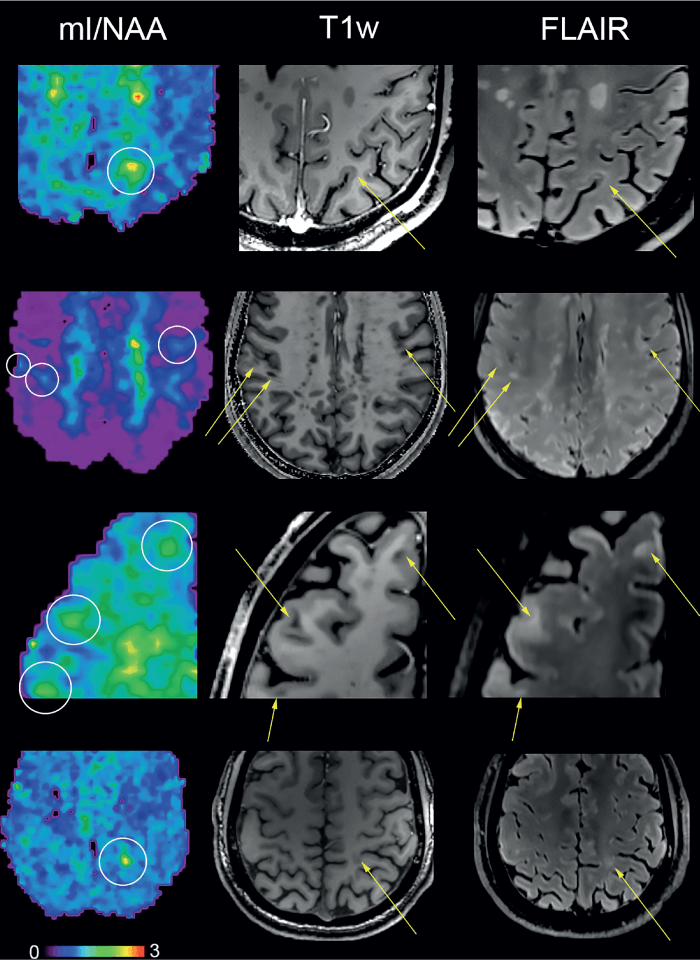All hands to the pump. What connects quantum computers and migratory birds? They both rely on radical pairs… The observation of spin dynamics in radical pairs remains challenging, despite recent technological advances. Now, researchers from the Universities of Konstanz, Würzburg, and Novosibirsk have developed a new way to monitor the spin evolution in radical-pairs and read out the singlet/triplet ratio. Termed “pump-push spectroscopy,” the technique allows “snapshots” of the radical pair’s spin state to be captured at specific points in time. The researchers hope their work will lead to a better understanding of how migratory birds use the Earth’s magnetic field to navigate across vast distances. It could also open up new avenues in quantum computing and in the field of organic solar cells. Link
Fragility glows. Photoluminescence spectroscopy could help reveal early signs of damage in concrete structures that usually escape detection via normal imaging inspections. Researchers from Rice University and the Kuwait Institute for Scientific Research discovered that Portland cement contains microscopic crystals of silicon emitting near-infrared photoluminescence. They applied a layer of opaque paint to a cement block and compressed it to induce microcracks, exposing the substrate’s near-infrared emission and revealing the fracture locations, pattern, and progression. And because the luminescence varies slightly with the type of cement, the technique could also be useful for identifying different cement formulations. Link
MR spectroscopy for multiple sclerosis diagnosis. Early detection of multiple sclerosis (MS) is crucial for patient prognosis. Although conventional magnetic resonance imaging (MRI) can detect white matter lesions, alternatives are needed for improved detection of changes at the biochemical level. To that end, a team of researchers at the Medical University of Vienna used magnetic resonance (MR) spectroscopy with a 7-tesla magnet to compare the neurochemical changes in MS patients with healthy controls. They were able to visualize pathologic findings beyond lesions, with metabolic abnormalities detected in normal-appearing white matter and cortical gray matter. Based on the results, the researchers suggest 7-tesla spectroscopic MR imaging could be a valuable new tool in the diagnosis and treatment of MS patients. Link
Unusual collaboration for safe salmon supply. Lightsense Technology recently announced a partnership with Pure Norwegian Seafood AS to develop new multi-spectral instruments based on Enhanced Photodetection Spectroscopy (EPS) technology. The aim? To detect bacterial pathogens in salmon processing and, therefore, reduce the financial impact of food contamination (4). EPS technology has already been used to identify coronaviruses in human saliva and to detect bacterial pathogens in water. Link

A heat resistant polymer has been developed with superior performance and at a lower cost, significantly expanding the scope of applicability of surface-enhanced Raman spectroscopy.
Hubble spectroscopy suggests black-hole outflows triggered star formation in dwarf galaxy Henize 2-10.
A wearable time-domain functional near-infrared spectroscopy (TD-fNIRS) device paves the way for more accessible noninvasive optical brain imaging.
Donald J. Douglas, a pioneer of inductively coupled plasma-mass spectrometry, receives the Lifetime Achievement Award at the 2022 Winter Conference on Plasma Spectrochemistry.




